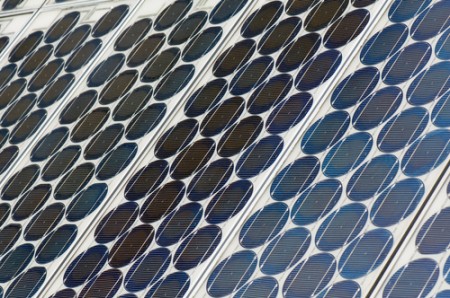By Michael Davidson, NRDC
The sun may be shining a little brighter in China for the rest of the year, as the country’s solar industry gets a shot in the arm with its first-ever nationwide solar PV feed-in-tariff (or FIT) enacted this week. In the last five months, China raised PV installation targets for 2015 twice, finally settling on 10 gigawatts – a ten-fold increase over the current capacity. This latest announcement should be the first in a series of initiatives on a path to that target – and a reminder to the world’s green economies that China takes its five-year plans seriously.

First, some details on the announcement (copying from the NDRC circular in Chinese, and here Google translated):
- All solar PV projects approved before July 1, 2011 and completed by December 31 will get RMB 1.15 (US 17.9 cents) per kilowatt-hour generated (solar thermal is not included)
- Projects approved after July 1 or not completed by December 31 will get RMB 1.00 (US 15.5 cents) per kWh
- Heavily insolated Tibet will keep its preferential tariff of RMB 1.15 (US 17.9 cents) / kWh
- Solar concession projects (competitive bidding) cannot exceed the FIT
- NDRC will adjust the tariff based on “changes in investment capital and technological improvements” as needed
The new policy has gotten all sorts of energy forecasters to revise their expected PV demand numbers: ranges of between 1.3 – 2GW installed this year, more than 2GW next year, and increasing thereafter. NDRC’s Energy Research Institute (ERI) Director Li Junfeng has also emphasized that bidding concessions will continue in tandem as China perfects the pricing structure, which may eventually include differentiated tariffs for roof-top vs. grid-scale solar. ERI researcher Wang Sicheng – a 25-year veteran of the Chinese PV industry – further noted that this is still experimental and if there are not enough subscribers, NDRC will consider raising the tariff next year.
Setting grid tariffs is particularly difficult because the government wants to stimulate the industry while not encouraging over-capacity (read my colleague’s post on the lessons and pitfalls of Spain’s feed-in-tariff). Only two years have passed since China’s first solar concession in Gansu, which resulted in a tariff of RMB 1.09 (US 16.9 cents) per kWh. And only last year, winning bids in the second solar concession ranged from RMB 0.723 – 0.991 (US 11.2 – 15.4 cents) per kWh. This tariff exceeds both of these during the first six months. It’s a delicate balance, but China already has experience with setting tariff levels after fifteen years with land-based wind power pricing, a process that’s being repeated with China’s second off-shore wind concession this year.
This tariff raises a number of questions:
- What will be its immediate impact on the third solar concession, which is supposed to be happening in the third quarter of the year?
- Will capacity additions be capped? Especially for solar resource-rich western provinces, this new policy could attract excessive investment and over-capacity.
- We’ve heard this tariff is only an interim one: how will the NDRC adjust the tariff over time?
- How much will the NDRC raise the national renewable energy surcharge (which is currently at RMB 0.004 (US 0.06 cents) / kWh) to help cover the expected costs from increased deployment?
China’s solar sector has benefited from overseas demand, but China is increasingly looking to harness sunlight within its own borders. The 12th Five-Year Plan set what was then viewed as an ambitious target of 5 gigawatts of solar installations by 2015. Officials then subsequently raised it to 10 gigawatts. This will help put China on track to meet 15 percent of its energy needs from renewable sources by 2020. It will also help capture a number of jobs tied to installation and maintenance of these facilities. A recent Worldwatch Institute report, using estimates based on only modest growth over the next ten years, estimates 23,000 jobs (direct and indirect) created annually in the installation phase alone.
As China develops its domestic solar base, it is also wise not to pick policy winners too early. Accordingly, this FIT:
- Does not take away incentives of certain provinces to help spur even greater deployment and job growth. Several provinces already have incentives, such as higher FITs, where the extra amount is covered by the provincial government. Jiangsu, for example, right after this policy came out said it was pursuing its own solar tariff of RMB 1.43 (US 22.2 cents) / kWh.
- Does not apply to projects already benefitting from other central government programs such as the extremely popular Golden Sun program or Solar Roofs Program.
- Does not affect watched-for regulations on minimum renewable energy share requirements for utilities, among other nationwide changes mandated in 2009.
The nationwide solar FIT – and the detailed regulations to come – is a solid step toward meeting China’s long-term energy security and low-carbon growth needs as it becomes a world leader in all forms of renewable energy.
![]() Editor’s Note: This column comes to us via a cross post from the Natural Resources Defense Council. Author credit goes to Michael Davidson, NRDC’s China Climate Fellow.
Editor’s Note: This column comes to us via a cross post from the Natural Resources Defense Council. Author credit goes to Michael Davidson, NRDC’s China Climate Fellow.